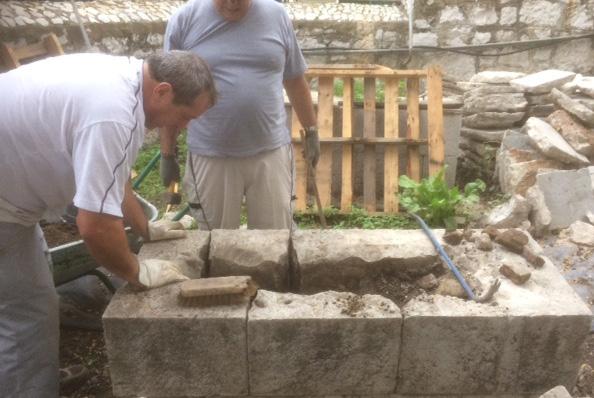
6 minute read
Bringing Witham’s Cemetery Back to Life
BRINGING
WITHAM’S CEMETERY BACK TO LIFE
You may know this space as Witham’s Cemetery, Sandpits Cemetery, or perhaps even the Officers’ Cemetery. For the past 4 years, the Gibraltar Heritage Trust and a core group of volunteers have been diligently working on a project to restore and open the site to the public. Now well over the halfway mark, we speak to project leader Keith Farrell to see how they’re getting on.
BY SOPHIE CLIFTON-TUCKER
HISTORY
Primarily for the officers of the fortress and their families, Witham’s Cemetery houses a number of famous figures. Although there are burials dating from the late 18th century and the early 20th century, the majority of the burials here took place in the 19th century. It has been inactive as a burial site since then, laying abandoned and overgrown.
Nestled between Knight's Court and St John's Court, the site is home to over 200 graves, around 20% of which belong to children, many of whom died of epidemics such as the 1828 yellow fever epidemic.
“You’ve also got to bear in mind it was a time where there was no proper surgery or anaesthetic. There were also only very basic obstetric services; many women died during childbirth, and children often died during early infancy. It becomes quite heart wrenching to see the number of children buried here,” project leader Keith Farrell admits.
Amongst the officers buried at Witham’s Cemetery are a few catholic priests, who all had issues with the catholic establishment, either with the church or the papacy, or with the local elders
Early 19th Century painting, over looking Sandpits and the Cemetery
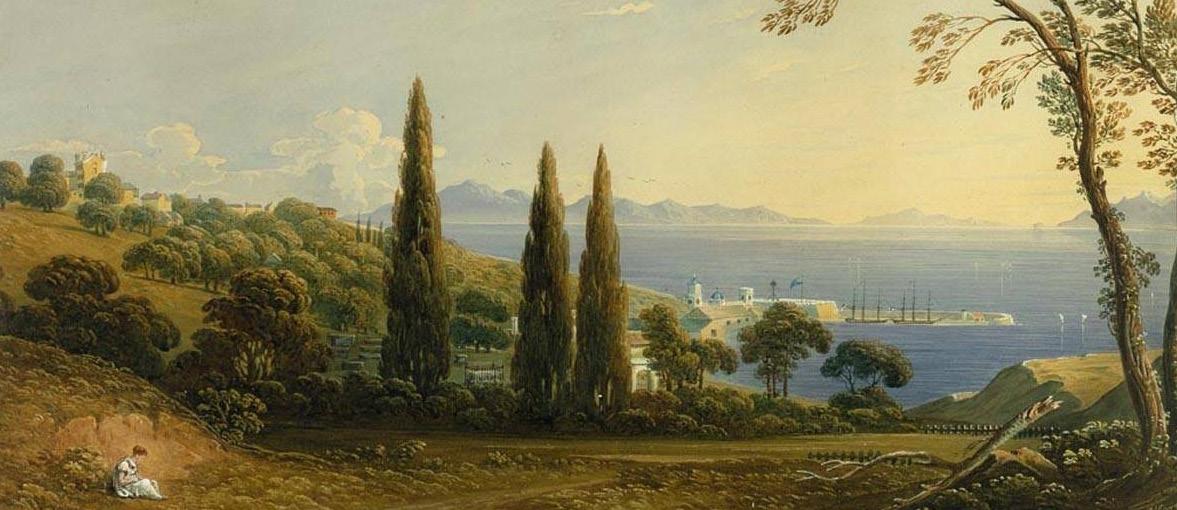
(known as the ‘Junta’).
One of these was Fr John Baptist Zino, who was the apostolic vicar of Gibraltar - the equivalent of a Bishop for his time. He had difficulties with the church, particularly with regards to the education of catholic children. “There was a sort of competition between the Methodists who were using a lot of their zeal in education – not necessarily trying to convert catholic kids, but it was that period of complicated history that made him fall out with the authorities, so he was buried here. However, his body was disinterred when Bishop Caruana died; when the Bishop was buried in the Cathedral, there was the opportunity for that to be made right at the same time by re burying Fr Zino in the Cathedral.” Keith reveals.
Another interesting individual who stands out is Joaquim de Menezes e Ataide – Archbishop of Madeira and Bishop of Elvas. The story of how we found him is curious. We didn’t know he existed. All we had was a reference to a Portuguese
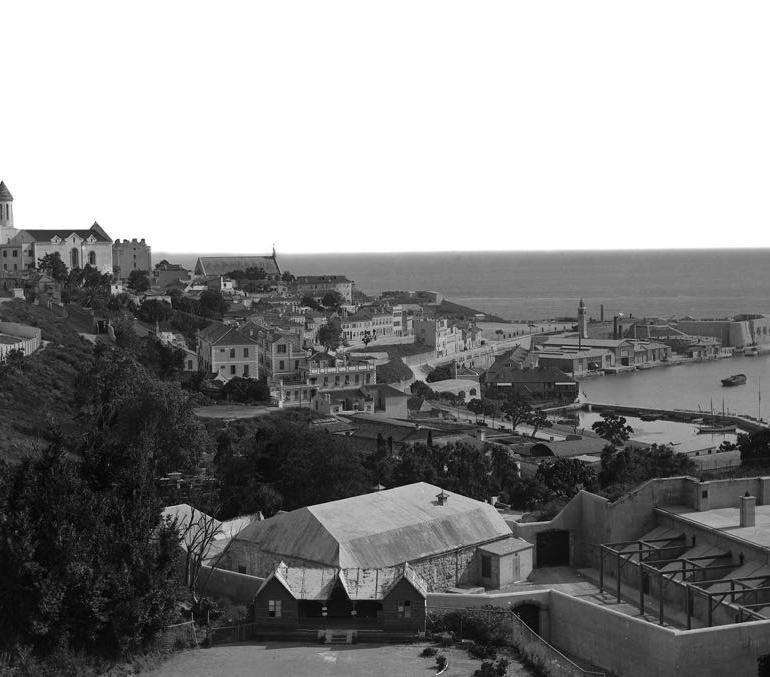
‘Bishop of Eluesis’, from a chap who did a review of the graves here in 1908. All the inscriptions were gone. A year ago, Peter Soiza, a lay helper in the Cathedral said ‘Look, we’re getting a group of Portuguese clergy coming, and they’re wondering if anybody knows where this Archbishop was buried?’. We only had a name – I Googled him and saw he was the Bishop of Meliapur in India, and
that he’d written some eulogy to the local British consul. He then went on to become Archbishop of Madeira and Bishop of Elvas.. ‘Elvas’ in Latin is ‘Elvensis’, so we were sure that the little reference to Eluesis was a misprint, and that it was him. All these little pieces came together a bit like a detective story! I’ve been to Elvas and made contact with the people there and they’re keen for us to potentially develop the concept and either have his grave rebuilt as an honour to someone who was really quite high up in the catholic church in Portugal during that period and make that connection. There are so many individuals here that are forgotten.”
There are several other people of note buried here, including. Sir James Cochrane – mid 1800s – as well as Dr Carlos Bouisson, the first editor of The Gibraltar Chronicle.
THE PROJECT
The objective of this project was to restore the cemetery and make it safe for the public, which Keith predicts may be as soon as early next summer. But it has been a mammoth task to get here. Many of the tombs disintegrated over time and had to be rebuilt, which involved removal of weeds in the tombs, stabilization of lime stone blocks and re-rendering.. “One of the biggest things is to have respect for the people who died here,” Keith notes. “Quite a few of them were born here, but the majority weren’t. It wasn’t like the forces nowadays who spend a couple of years here and maybe don’t put down roots - these people had been here for sometimes decades.” Honorary Gibraltarians indeed!
It paints a picture of life in the 1800s, Georgian and Victorian life on the Rock, which we really don’t have a huge amount of information about. It offers more of a social history than one of battles and wars – one that is unique to us and reflects the pastiche that makes up
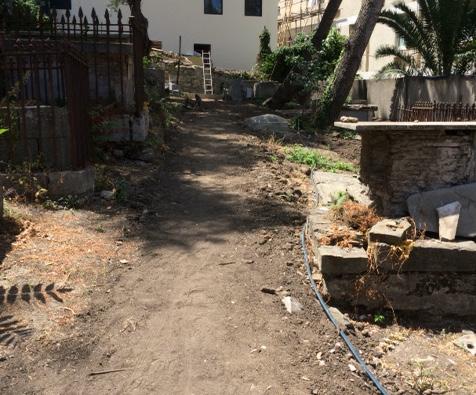

who we are in Gibraltar.
The cemetery lies on consecrated ground, so theoretically the grounds cannot be used for anything other than what it is. There had initially been talk about the cemetery being used a carpark, but the Trust fought for it to remain as it is.
All the tombs will remain exactly where they are. They have suffered from vandalism over the years, and as a result many of the tomb plaques lay in fragments. “I’ve spent a huge amount of time trying to put them together, a bit like a jigsaw puzzle!” says Keith.
The Plata Villa development now stands where the school building once did, with the remaining grounds developed as extra housing. “Part of the planning permission for the development of Plata Villa was to contribute to the opening up of this site, which they’ve done in terms of pruning some of the trees – some were in poor condition and needed some work doing to them - and the formation of the path and steps.
VOLUNTEERS
It’s all hands on deck for the wonderful group of volunteers who have admirably given so much of their time and effort to the project. “We have a core group of volunteers who are very committed; we can depend on them week in, week out,” expresses Keith. Some are trustees, whilst others have simply volunteered as they love the project. “It’s a very nice location, usually very quiet. There’s a lovely atmosphere, not eerie as one might expect of a cemetery.”
If you would like to contribute to this project, get in touch at heritage@ gibraltar.gi.
WHAT’S NEXT?
People will eventually be
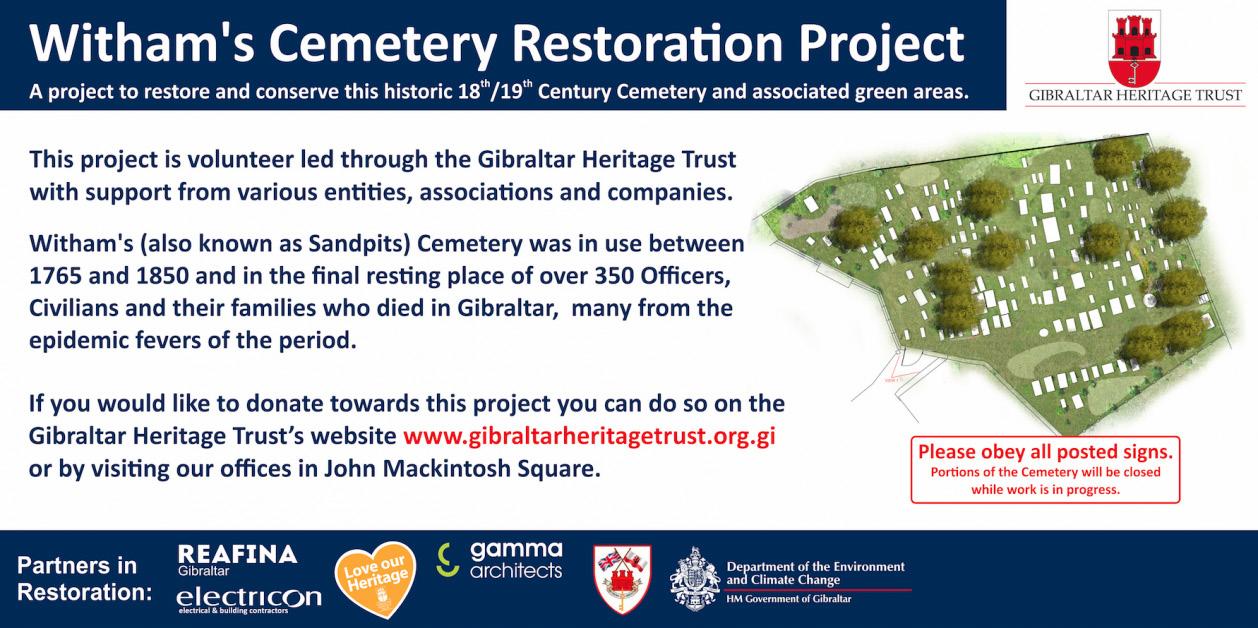
able to come in, walk around, and enjoy the natural vegetation and birds. Now that we’re two thirds of the way into this process, we’re hoping to have 90% of it open to the public by next summer. The core work has now been done. As a voluntary process, it takes such a long time - we’ve been at it for four years now!
We’re also hoping to convert the period building on site (currently housing) and use it as an information centre to showcase the cemetery as a tourist site. There’s a lot more to this place than meets the eye.
